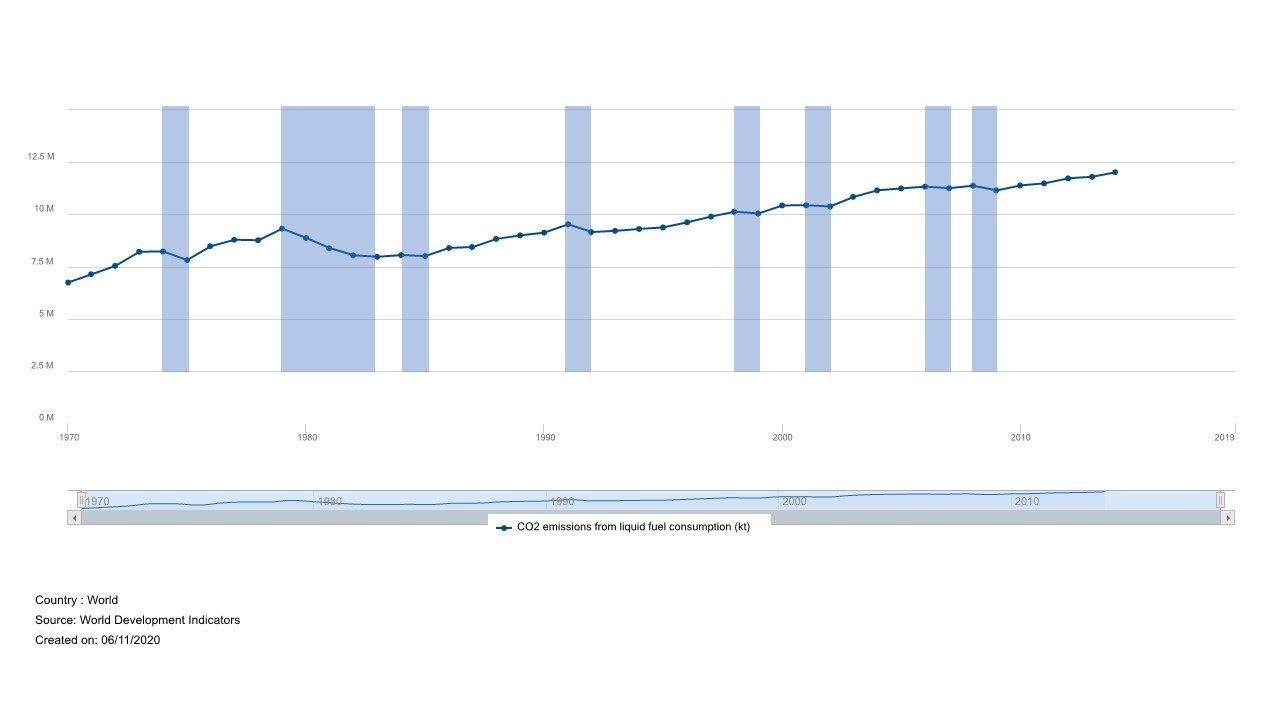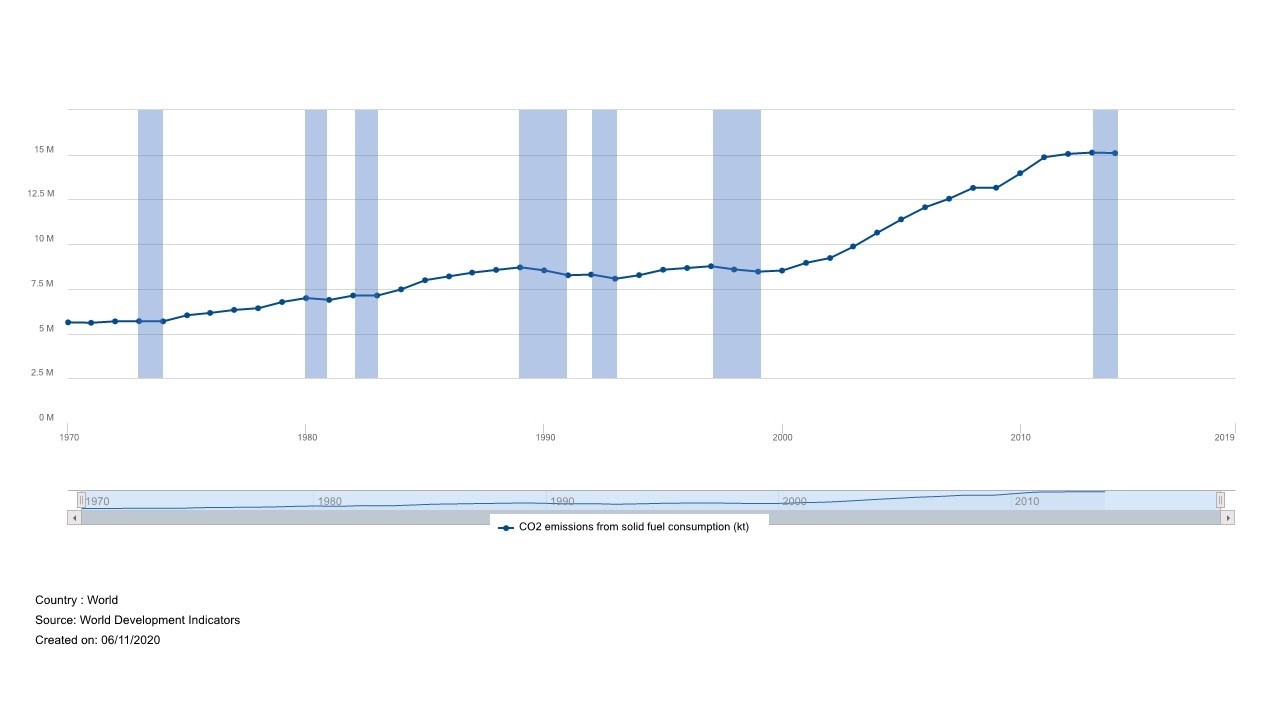Air pollution is one of the major causes of death all over the world: every year, more than four and a half million people die for causes directly related to poor air quality [1]. However, policymakers around the globe did not succeed to tackle the issue effectively.
The COVID-19 outbreak led to a dramatic decrease in production, transportation and energy consumption. Once again, nature did what humans failed to: CO2 emissions dropped by around 17%[2], bringing about significant improvements in the air quality. For example, cleaner air in India saved up to 17 times more lives than the coronavirus related deaths, estimates Marshall Burke from Stanford University.
We shall however be more careful than cheerful. The huge decrease in emissions has not been triggered by a structural change in production and consumption practices, rather by a temporary stop that might even threaten world’s green policy agenda by shifting resources and attention away from environmental issues as soon as lockdowns are lifted. The 2020 total decrease in CO2 emissions will be much lower: between -4.2% and -7.5%.[3] This estimate is based on what happened to regions that already re-opened their economies in the past few weeks: economic recovery takes the precedence over processes such as decarbonisation. Pollution rises again.
Considering past experiences, this seems to be inevitable.
AFTER-CRISIS EFFECT
It has been overwhelmingly proven that there is a strict relation between a thriving economy and a decreasing air quality [4]. Given that a severe shock is tackled with economic growth, we shall be aware of an ‘after-crisis’ effect on pollution levels. If the only thing world governments and companies care about is to recover the damages coming from the suspension of their economic activities, they would produce and consume at any social expense.
Analysing some indicators of CO2 emissions published by the World Bank, we see a clear rising trend in the last 50 years spaced out only by a few drops which usually last less than two years. For this analysis we took CO2 emissions (kt) as total, and then decomposed it (emissions from gaseous fuel, liquid fuel and solid fuel) in order to investigate each productive force separately.
Looking at the total consumption we see that the first decrease happens in the period 1974-1975, the second one in the 1979-1983, the third one 1991-1993, and the last one 2008-2009. As the GDP growth graph shows, they are all periods in which a lowering global rate was registered. A crucial remark, which is the main point of our article, is that the post-crises recovery is always steeper than the crises drop.
Let us now look at the decomposition of this index.
In the above graph the CO2 emissions from gaseous fuel is pictured. It mainly refers to household consumption, such as heating and cooking. Since this kind of consumption is very inelastic, we expect to see smooth decreases in crises periods. Indeed, we can see that there are only four drops and that the timeframes are shorter with respect to the first indicator. The first decrease is 1981-1983, the second one is 1985-1986, the third one is 1996-1997 and the last one is 2007-2008.
However, it is worth noting that CO2 emissions from gaseous fuel consumption is the indicator that increased the most in the considered period: it registered an increase by 200% from 1970 until 2010.
When we look at CO2 emissions from liquid fuel consumption, we mainly refer to emissions from use of petroleum derived fuels, hence transportation and, partly, industrial production. Here, as we expected, things are a little bit different in terms of importance of the shocks and time consistency than the first indicator.

In fact, CO2 emissions from liquid fuel consumption’s behaviour is like total CO2 emissions for the first 10 years: 1974-1975, 1979-1983. Then the decade 1980-1990 is U-shaped with a small increase between the start and the end; the 1998-1999 fall is the same as in the total emissions as well as the final drop in 2008-2009. In 1991-1992, the drop is shorter than the shock in the total CO2 emissions (1991-1993). The 2001-2002 is again more a stop than a drop as well as 2006-2007. This fact suggests that also in this case, the rise is always steeper than the fall. Here the total increase is less than 100% from 1970 up to 2014. Even if we do not have clear global data about the drop during the pandemic yet, the quarantine regime is likely to have brought a sharp fall of this indicator, hence confirming our point.
Carbon dioxide emissions from solid fuel consumption mainly refer to emissions from use of coal as an energy source. Again, we can note some similarities with total CO2 emissions. The first drop (more a stop) is 1974-1975; the second ones are 1980-1981 and 1982-1983; the third ones are 1989-1991 and 1992-1993; the fourth one is 1997-1999 and the last one is 2013-2014. Again, it can be noted that there has been an increase by nearly 200% from 1970 until 2014. Here the evidence appears in a different shape: we do not see many substantial falls (i.e. the crisis periods are absorbed quite well), but during the recoveries the hikes are spectacular.
As we have just seen, it is not the first time that crises trigger a short-lived reduction in pollution followed up by a return to prior levels of emissions once the economy starts to run again.
On the other hand, there is still some hope when looking back in history: after the oil crises of the 1970s, alternative, more efficient and sustainable energy sources became more attractive. However, one complication of the current crisis in this respect is the extremely low price for oil that makes it very convenient for everyone to go back to the traditional modes of production and consumption.
One final concern is moral hazard. People and companies might be further discouraged to use green sources of energy since public opinion is not as concerned with decarbonisation as it was before the virus outbreak.
POLICY DEBATE AND CONCLUSION
We do not know yet what the final impacts on society of the pandemic will be. But policymakers shall not lose sight of what global priorities were before the crisis and must learn from the past. They shall exploit the momentum given by the short-term reduction in pollution to trigger a structural change by stimulating low carbon modes of production, consumption and transportation.
Why should we expect a brake with the past? The crucial fact is that today we have a stronger international commitment towards green policies. As international movements have shown, people are aware of the risks brought by pollution and they are not willing to bear them anymore. Moreover, it is crucial to insist on the objectives, tools and resources contained in the Paris Agreement, which has been so far ignored.
To get a clear picture of the environmental policy debate in such an inimitable context, we shall look at the EU. The European Commission announced its determination to include the ambitious Green New Deal in the EU Budget 2021-2028. French President Emmanuel Macron, among other European political leaders, explicitly stated his commitment to building a more sustainable world.
However, harsh resistance on the opposite side makes things much more complicated. Czech Prime Minister put forward very modest environmental policies as the other ex-soviet countries did. They say it is unfeasible for their coal-dependent economies to go through such a crisis by limiting industrial emissions.
European Associations of vehicle manufacturers, suppliers and repairers are also lobbying against the ambitious Green New Deal. In a letter to the EC President Ursula von der Leyen, they express concern about the timing of such green policies that would significantly damage their business activities.
The road to a more sustainable global energetic model is an uphill struggle. The after-crisis responses in sectors like international trade, industrial production, energy consumption, transportation have to follow the same “green fil rouge”.
Our idea is that environmental policies shall not be neglected in the name of economic recovery if we don’t want to deal with much bigger problems in the near future.
If the risk is to go back to normality after pollution levels dropped during the lockdown, then we shall build our new normality.
[2]https://woods.stanford.edu/news/covid-19-media-coverage
[3]https://www.nature.com/articles/s41558-020-0797-x
[4]https://www.ncbi.nlm.nih.gov/pmc/articles/PMC3490639/



